Denver International Airport, is an international airport in the Western United States, primarily serving metropolitan Denver, Colorado, as well as the greater Front Range Urban Corridor.
At 33,531 acres (52.4 sq mi; 135.7 km²), it is the largest airport in North America by land area and the second largest in the world, behind King Fahd International Airport. Runway 16R/34L, with a length of 16,000 feet (3.03 mi; 4.88 km), is the longest public use runway in North America and the seventh longest in the world.
Opened in 1995, DEN currently has non-stop service to 215 destinations amongst 23 different airlines throughout North America, Latin America, Europe, and Asia; it is the fourth airport in the U.S. to exceed 200 destinations.
The airport is a hub for both United Airlines and Frontier Airlines and is also a base for Southwest Airlines. As of 2019, DEN is the 18th busiest airport in the world — the fifth busiest in the U.S.
With over 35,000 employees, the airport is the largest employer in Colorado. The airport is located on the western edge of the Great Plains and within sight of the Front Range of the Rocky Mountains.
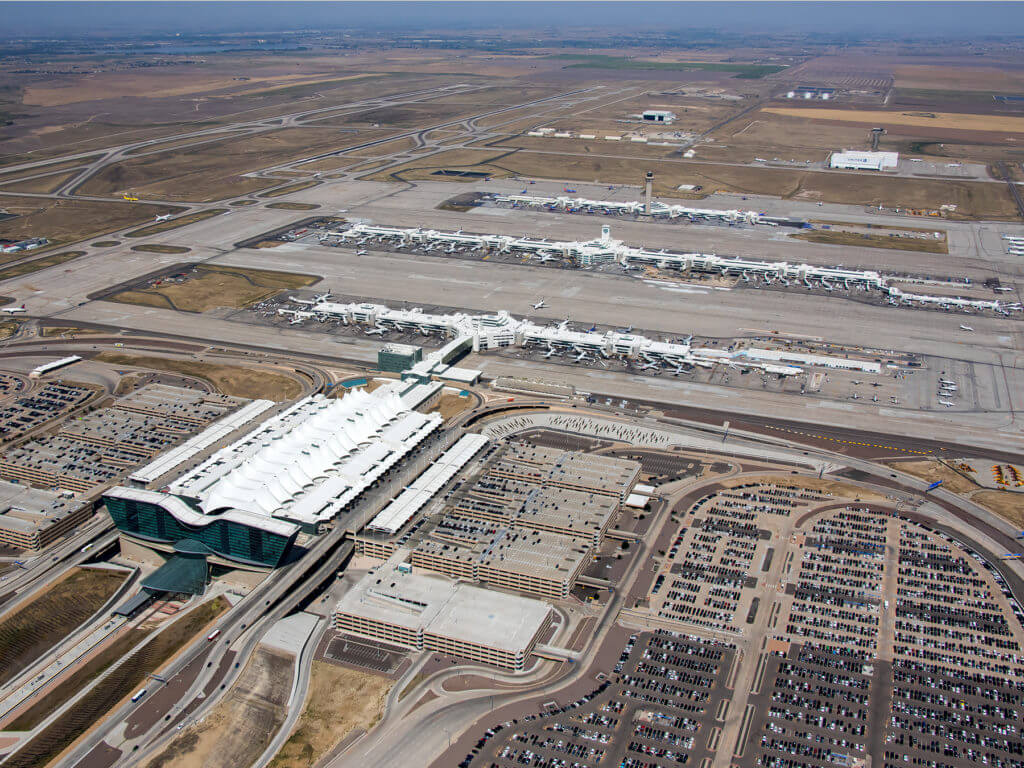
Geography
The airport is 25 miles (40 km) driving distance from Downtown Denver, which is 19 miles (31 km) farther away than Stapleton International Airport, the airport DIA replaced.
The distant location was chosen to avoid aircraft noise affecting developed areas, to accommodate a generous runway layout that would not be compromised by blizzards, and to allow for future expansion.
The 52.4 square miles (136 km2; 33,500 acres) of land occupied by the airport is more than one and a half times the size of Manhattan (33.6 square miles or 87 square kilometres). DIA occupies the largest amount of commercial airport land area in the United States and in North America, by a great extent.
Dallas/Fort Worth International Airport is a distant second at 27.0 square miles (70 km2). The land was transferred from Adams County to Denver after a 1989 vote, increasing the city’s size by 50 percent and bifurcating the western portion of the neighboring county.
As a result, the Adams County cities of Aurora, Brighton, and Commerce City are actually closer to the airport than much of Denver.
All freeway traffic accessing the airport from central Denver leaves the city and passes through Aurora for just shy of two miles (3.2 km), making the airport a practical enclave.
Similarly, the A Line rail service connecting the airport with downtown Denver has two intervening stations in Aurora.
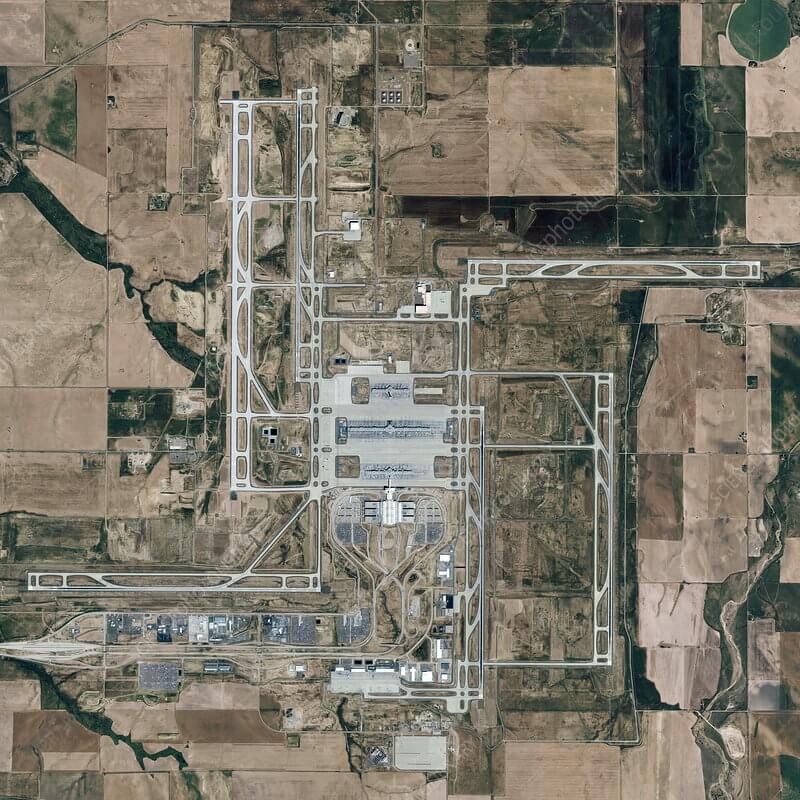
History
Denver has traditionally been home to one of the busier airports in the nation because of its location.
From 1980 to 1983, the Denver Regional Council of Governments (DRCOG) investigated six areas for a new metro area airport that were north and east of Denver.
In September 1989, under the leadership of Denver Mayor Federico Peña, federal officials authorized the outlay of the first $60 million (equivalent to $124 million today) for the construction of DEE. Two years later, Mayor Wellington Webb inherited the megaproject, scheduled to open on October 29, 1993.
Delays caused by poor planning and repeated design changes due to changing requirements from United Airlines caused Mayor Webb to push opening day back, first to December 1993, then to March 1994. By September 1993, delays due to a millwright strike and other events meant opening day was pushed back again, to May 15, 1994.
DEN finally replaced Stapleton on February 28, 1995, 16 months behind schedule and at a cost of $4.8 billion (equivalent to $8.1 billion today), nearly $2 billion over budget ($3.4 billion today).
The construction employed 11,000 workers. United Airlines Flight 1062 to Kansas City International Airport was the first to depart DIA and United Flight 1474 from Colorado Springs Airport was the first to arrive at the new airport.
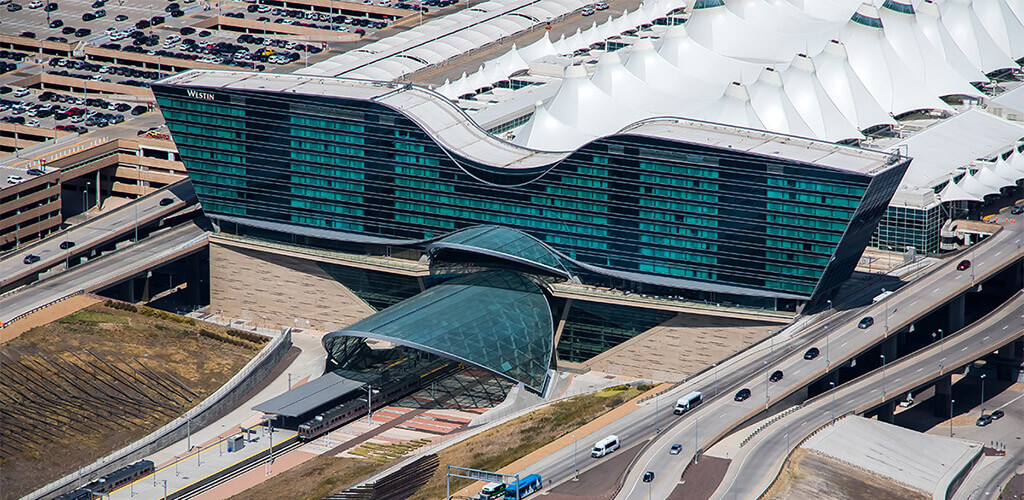
Facilities
Jeppesen Terminal
Jeppesen Terminal, named after aviation safety pioneer Elrey Borge Jeppesen, is the land side of the airport. Road traffic accesses the airport directly off of Peña Boulevard, which in turn is fed by Interstate 70 and E-470. Two covered and uncovered parking areas are directly attached to the terminal – four garages and an economy parking lot on the east side; and four garages and an economy lot on the west side.
The main terminal has six official floors, connected by elevators and escalators.
- Floors 1–3 comprise the lowest levels of the parking garages as well as the economy lots on both sides of the terminal.
- Floor 4 contains passenger pickup, as well as short-term and long-term parking.
- Floor 5 is used for parking as well as drop offs and pickups for taxis and shuttles to rental car lots and off-site parking. The fifth floor also contains the baggage carousels and security checkpoints.
- Floor 6 is used for passenger drop off and check-in counters. Passengers are routed first to airline ticket counters or kiosks on the sixth floor for checking in.
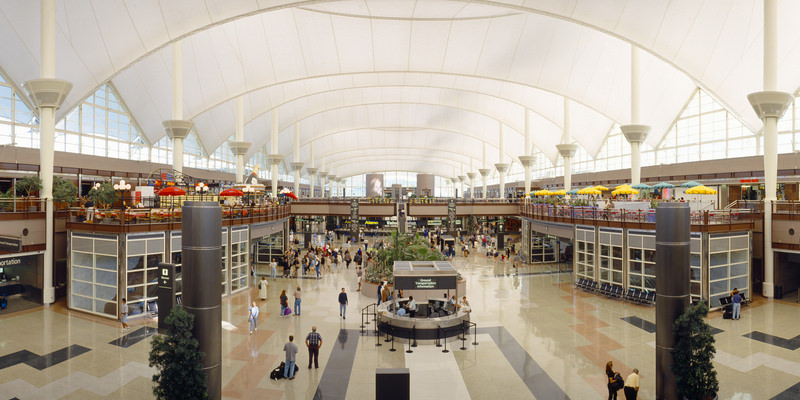
Concourse A-C
DIA has three midfield concourses, spaced far apart. Concourse A is accessible via a pedestrian bridge directly from the terminal building, as well as via the underground train system that services all three concourses.
Concourse A
Concourse A has 51 gates, which includes several “ground load positions” requiring passengers to exit the main concourse through shared doors to access their aircraft.
Concourse A handles all domestic airlines except Alaska, Southwest, and Spirit as well as all international arrivals (excluding airports with border preclearance).
There are currently twelve dedicated gates for international arrivals; five of those are equipped to handle widebody aircraft. Two airline lounges are currently located on the top floor of the central section of Concourse A: an American Admirals Club and a Delta Sky Club.
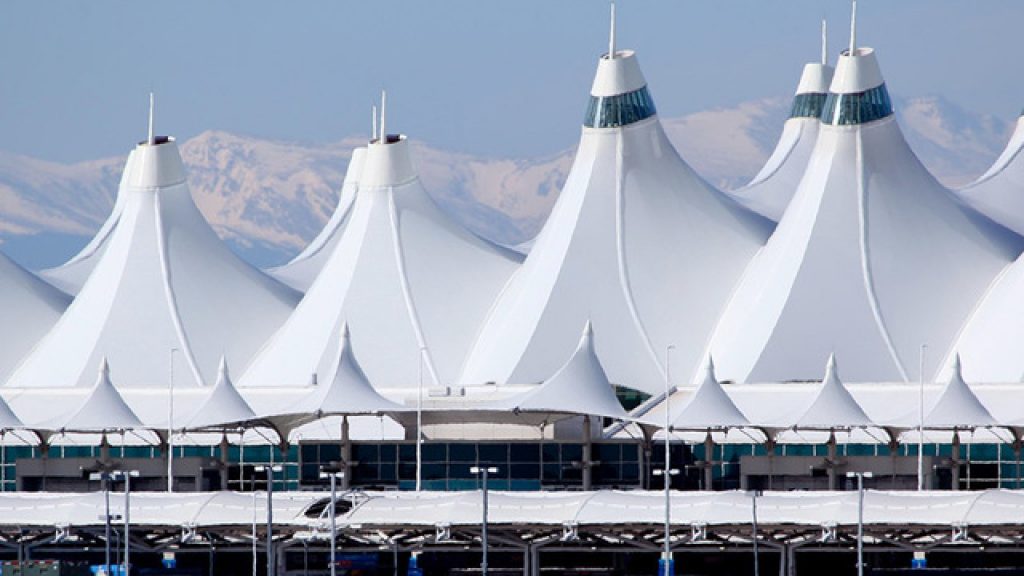
Concourse B
Concourse B has 70 gates. United Airlines is the sole occupant of Concourse B. Mainline United flights operate from the main concourse building, whereas United Express operations are primarily handled at the east end of the concourse, which currently includes two concourse extensions for smaller regional planes.
Four gates near the center of the concourse are equipped to handle widebody aircraft and each have twin jet bridges labeled A and B. There are two United Clubs on the second floor of Concourse B, situated about an equal distance away from the people mover station: one near gate B32 and the other near gate B44.
Concourse C
Concourse C has 29 gates. Southwest Airlines is the primary occupant of the concourse with only two other airlines, Alaska Airlines and Spirit Airlines, utilizing the concourse. A 2014 expansion added five new gates to the west end of the concourse.
The expansion, at a cost of $46 million, allowed Southwest to consolidate all of its operations into Concourse C (prior to the expansion, Southwest was using two gates on Concourse A, which it had inherited from its merger with AirTran Airways).
American Express recently began construction on a 14,650-square-foot (1,361 m2) Centurion Lounge in the upper level of the eastern wing of Concourse C. The lounge is expected to open in mid-2020, and will be the second largest of its kind.
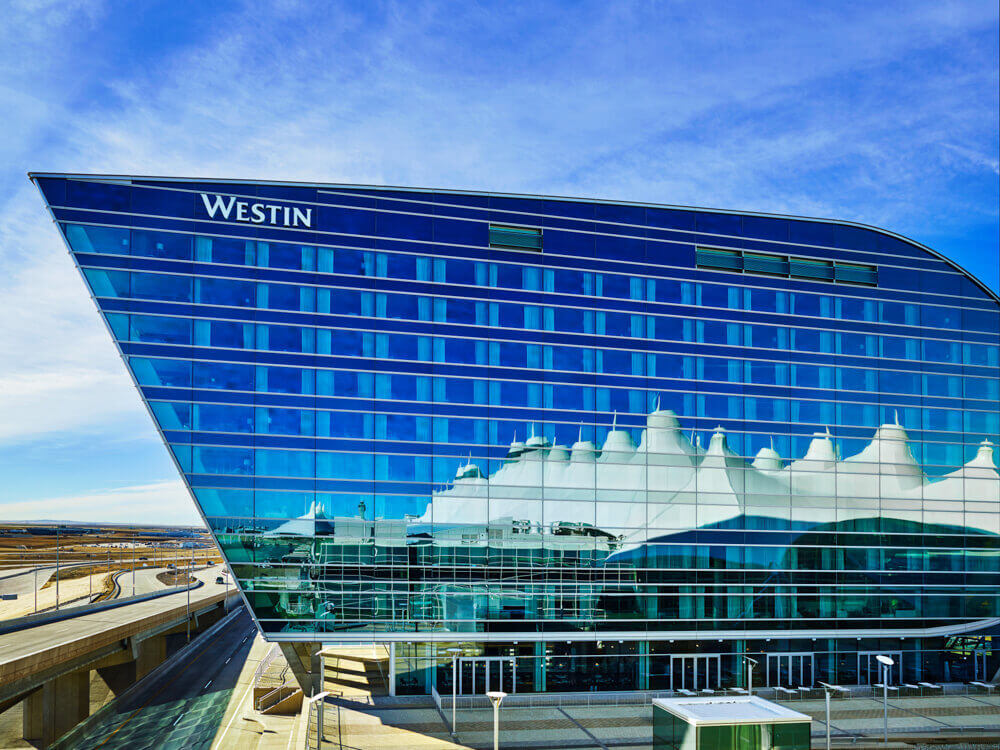
Solar energy system
Denver International Airport currently has four solar photovoltaic arrays on airport property, with a total capacity of 10 megawatts or 16 million kilowatt-hours of solar electricity annually.
Solar I
In mid-2008, Denver International Airport inaugurated a $13 million (equivalent to $15.4 million today) solar farm situated on 7.5 acres (330,000 sq ft; 30,000 m2) directly south of Jeppesen Terminal between Peña Boulevard’s inbound and outbound lanes.
The solar farm consists of more than 9,200 solar panels that follow the sun to maximize efficient energy production and generate more than 3.4 million kilowatt hours of electricity per year.
Owned and run by a specialist independent energy company, Fotowatio Renewable Ventures, its annual output amounts to around 50% of the electricity required to operate the train system that runs between the airport’s terminal and gate areas.
By using this solar-generated power, DEN will reduce its carbon emissions as much as five million pounds each year.
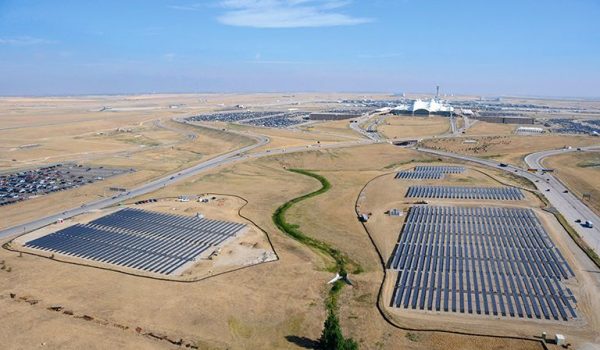
Solar II
In December 2009, a $7 million ($8.3 million today), 1.6-megawatt solar project on approximately nine acres (390,000 sq ft; 36,000 m2) north of the airport’s airfield went into operation.
The array is a project that involves MP2 Capital and Oak Leaf Energy Partners generating over 2.7 million kilowatt-hours of clean energy annually and provides approximately 100% of the airport’s fuel farm’s electricity consumption.
Solar III
A third solar installation situated on 28 acres (1,200,000 sq ft; 110,000 m2), dedicated in July 2011, is a 4.4MW complex, expected to generate 6.9 million kilowatt-hours of energy.
Intermountain Electric Inc. built the system, with solar panels provided by Yingli Green Energy. The power array will reportedly reduce CO2 emissions by 5,000 metric tons per year.
Solar IV
The airport added its fourth solar power array in June 2014. The $6 million system can generate up to 2MW, or 3.1 million kilowatt-hours of solar electricity annually.
It is located north of the airfield and provides electricity directly to the Denver Fire Department’s Aircraft Rescue and Fire Fighting (ARFF) Training Academy.
Denver International Airport’s four solar array systems now produce approximately six percent of the airport’s total power requirements.
The output makes DEN the largest distributed generation photovoltaic energy producer in the state of Colorado, and the second-largest solar array among U.S. airports.
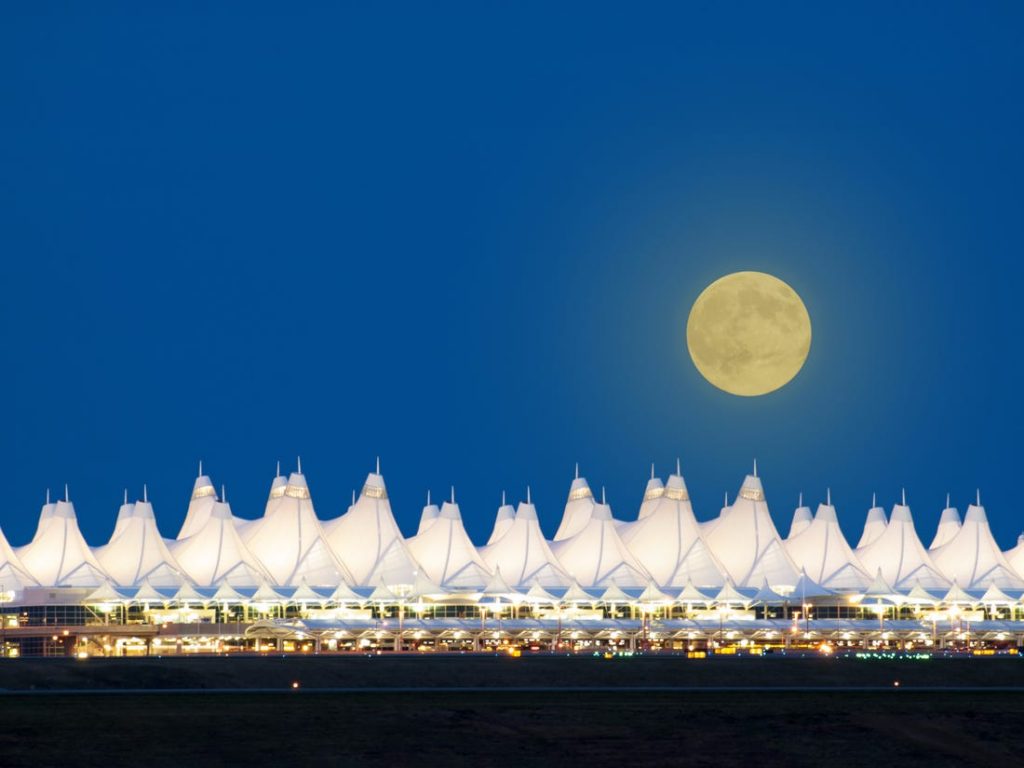
Future
In 2018, work began on a major interior renovation and reconfiguration including the beginning phases of construction to relocate two out of the three TSA security checkpoints from the Great Hall on Level 5 to Level 6 (East & West) while simultaneously updating and consolidating airline ticket counters/check-in for all airlines.
Eventually, both pre and post security gathering and leisure areas will be incorporated into the spaces where both expansive TSA security areas on Level 5 are currently located.
The third TSA security checkpoint currently accessible via the Concourse A bridge is expected to be removed. The renovation and reconfiguration will bring back the original intent and use of the Great Hall as a large commons area for airport patrons and visitors to enjoy. This phased terminal project is expected to be completed by 2025.
Additionally, work is underway on expanding all three concourses, with 12 new gates being added to A (including several gates with direct access to U.S. Customs and Border Protection), 11 to B and 16 to C for a total of 39 gates.
Following the completion of this project, United Airlines will lease 24 additional gates on both A and B (bringing its total gate count at DEN to around 90), as well as build a new United Club in A and expand their existing clubs in B.
Southwest Airlines will lease 16 of the new gates on C bringing its total gate count at DEN to 40. When both the ongoing terminal and concourse projects are completed, the airport will be able to handle upwards of 90 million passengers per year.
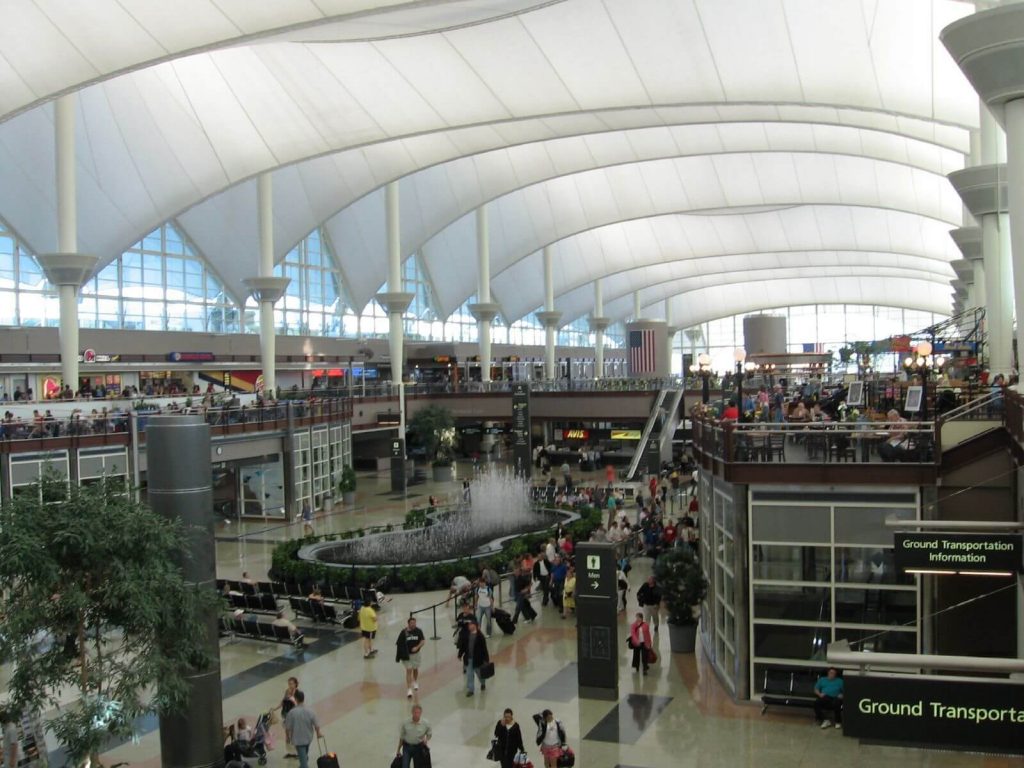
Denver International Airport Data
- Country
- America
- Region
- North America
- Status
- In use
- Location
- Northeast Denver, Colorado, U.S.
- Owner(s)
- City & County of Denver Department of Aviation
- Official website
- flydenver.com
- Operator(s)
- City & County of Denver Department of Aviation
- Cost
- US $4.8 billion (in 1993)
- Opened
- Feb-28, 1995
- Airport type
- Public
- Airport code
- IATA: DEN, ICAO: KDEN, FAA LID: DEN
- Airport area
- 33532 acres / 135.7 km²
- Runway length
- 5*3658 m,1*4877 m
- Passenger traffic
- 69 million(2019)
- Freight volume
- 671,975,659 tons (2019)
- Takeoffs and landings
- 640,098 sorties (2019)
- Elevation AMSL
- 5,434 ft / 1,656 m
View Denver International Airport on Google Satellite Map
Google satellite maps allow you to see building details more clearly, including natural landscapes such as mountains, rivers, deserts, sea and man-made engineering buildings.
If you are very interested in this engineering building, it is a good idea to click below Google Map icon. We will help you jump to the corresponding location of this building or engineering on Google satellite map.






























































